 W
WHMS Alacrity was a Cruizer-class brig-sloop built by William Rowe at Newcastle and launched in 1806. She served in the Baltic and was at the capture of Copenhagen in 1807. She captured a large privateer before herself falling victim to a French man-of-war in 1811 in an action in which her captain failed to distinguish himself. She then served in the French navy until she was broken up in 1822.
 W
WHMS Apelles was a Crocus-class brig-sloop of the Royal Navy. She was launched in 1808 and sold in 1816. During her service she grounded on the French coast and was in French hands for about a day before the British recaptured her. During her career she captured two French privateers.
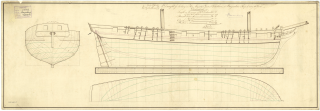 W
WHMS Bacchus was a British Royal Navy Cruizer-class brig-sloop launched in 1813 and expended as a breakwater in 1829. In between, she recaptured or captured a number of small merchant vessels.
 W
WHMS Beagle was a Cherokee-class 10-gun brig-sloop of the Royal Navy, one of more than 100 ships of this class. The vessel, constructed at a cost of £7,803, was launched on 11 May 1820 from the Woolwich Dockyard on the River Thames. Later reports say the ship took part in celebrations of the coronation of King George IV of the United Kingdom, passing through the old London Bridge, and was the first rigged man-of-war afloat upriver of the bridge. There was no immediate need for Beagle so she "lay in ordinary", moored afloat but without masts or rigging. She was then adapted as a survey barque and took part in three survey expeditions.
 W
WHMS Chanticleer was a Cherokee-class 10-gun brig of the Royal Navy. Chanticleer was launched on 26 July 1808. She served in European waters during the Napoleonic Wars and was paid off and laid up at Sheerness in July 1816. She was chosen for an 1828 scientific voyage to the Pacific Ocean. Her poor condition on her return meant that the Admiralty replaced her for the second voyage in 1831 with another Cherokee-class brig, Beagle, which subsequently became famous because of the association with Charles Darwin. Chanticleer then spent 15 years as a customs watch ship at Burnham-on-Crouch and was broken up in 1871.
 W
WHMS Childers was a brig-sloop of the British Royal Navy, initially armed with 10 carriage guns which were later increased to 14 guns. The first brig-sloop to be built for the Navy, she was ordered from a commercial builder during the early years of the American War of Independence, and went on to support operations in the English Channel and the Caribbean. Laid up for a time after the end of the American War of Independence, she returned to service shortly before the outbreak of the French Revolutionary Wars. She had an active career in both the French Revolutionary and Napoleonic Wars, capturing numerous French privateers and during the Gunboat War participated in a noteworthy single-ship action. The navy withdrew her from service at the beginning of 1811, at which time she was broken up.
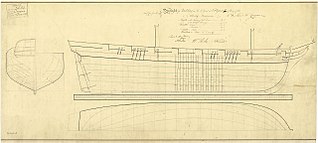 W
WHMS Crocus was the nameship of the Crocus-class brig-sloops of the Royal Navy. She was launched in 1808 and had an almost completely uneventful career until she was sold in 1815. She then became a merchantman trading with the West Indies and the Mediterranean. She was last listed in 1823.
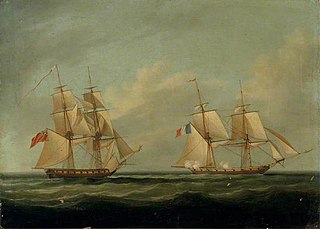 W
WHMS Curieux was a French corvette launched in September 1800 at Saint-Malo to a design by François Pestel, and carrying sixteen 6-pounder guns. She was commissioned under Capitaine de frégate Joseph-Marie-Emmanuel Cordier. The British captured her in 1804 in a cutting-out action at Martinique. In her five-year British career Curieux captured several French privateers and engaged in two notable single-ship actions, also against privateers. In the first she captured Dame Ernouf; in the second, she took heavy casualties in an indecisive action with Revanche. In 1809 Curieux hit a rock; all her crew were saved but they had to set fire to her to prevent her recapture.
 W
WHMS Delight was a British Royal Navy 16-gun brig-sloop of the Seagull class launched in June 1806, six months late. She grounded off Reggio Calabria in January 1808 and was burnt to prevent her being salvaged.
 W
WHMS Electra was a British Royal Navy 16-gun brig-sloop of the Seagull class launched on 23 January 1806. She was wrecked in 1808.
 W
WHMS Epervier was a French 16-gun Alcyon-class brig. HMS Egyptienne captured her in the Atlantic Ocean on 27 July 1803; she was taken into Royal Navy service under her existing name. Before being broken up in 1811 she captured several prizes and was present at the Battle of San Domingo. Her crew received a clasp to the Naval General Service Medal for their participation in that battle and another for an action in December 1808. She was laid up in late 1810 and was sold in 1811.
 W
WHMS Fly (1813) was a Royal Navy Cruizer-class brig-sloop built by Jabez Bailey at Ipswich. She was ordered 23 April 1812, launched in 16 February 1813 and commissioned May 1813.
 W
WHMS Halcyon (1813) was a Royal Navy Cruizer-class brig-sloop that Edward Larking & William Spong built at King's Lynn and launched in 1813. She had one of the shortest lives of any vessel of her class.
 W
WHMS Imogen was a Royal Navy 16-gun brig-sloop of the Seagull class launched in July 1805. She served primarily in the Adriatic campaign before the Navy sold her in 1817.
 W
WHMS Julia was a British Royal Navy 16-gun brig-sloop of the Seagull class launched in February 1806. After a fairly uneventful decade-long career she was wrecked at Tristan da Cunha in 1817 with heavy loss of life.
 W
WHMS Manly was an Archer-class gun-brig launched in 1804. During her career first the Dutch captured her, then the British recaptured her, then the Danes captured her, and finally the British recaptured her again. The British renamed her HMS Bold after her recapture in 1813. She was sold out of service in 1814.
 W
WHMS Merope was a Crocus-class brig-sloop of the Royal Navy, launched in 1808. She served during the Napoleonic Wars and had a relatively uneventful career that ended with her being sold for breaking up in 1815.
 W
WHMS Mutine was a Royal Navy 18-gun Cruizer class brig-sloop, built by Henry Tucker at Bideford and launched in 1806. During her career she was under fire in Danish waters, in the Bay of Biscay, and at Algiers. She also visited North America, South America, and the West Coast of Africa. She was sold in 1819.
 W
WHMS Nightingale was a 16-gun brig-sloop of the Seagull class of the British Royal Navy, launched in July 1805. She served during the Napoleonic Wars, primarily in the North Sea, where she captured a number of merchant vessels. The Navy sold her in 1815. She then became a merchantman, trading across the Atlantic, particularly between Liverpool and South America. She was last listed in 1829.
 W
WHMS Oberon was a 16-gun brig-sloop of the Seagull class built at Kingston upon Hull and launched in 1805. She was constructed at the James Shepheard Shipyard, Sutton.
 W
WHMS Ontario was a British warship that sank in a storm in Lake Ontario on 31 October 1780, during the American Revolutionary War. She was a 22-gun snow, and, at 80 feet (24 m) in length, the largest British warship on the Great Lakes at the time. The shipwreck was discovered in 2008. Ontario was found largely intact and very well preserved in the cold water. The wreck discoverers asserted that "the 80-foot sloop of war is the oldest shipwreck and the only fully intact British warship ever found in the Great Lakes."
 W
WHMS Orestes was a 16-gun brig-sloop of the Seagull class of the British Royal Navy, launched in October 1805. She served during the Napoleonic Wars, primarily in the North Sea and the Channel, where she captured three privateers. The Navy sold her in 1817.
 W
WHMS Paulina was a British Royal Navy 16-gun brig-sloop of the Seagull class launched in December 1805 for cruising. She had a relatively uneventful career before she was sold in 1816.
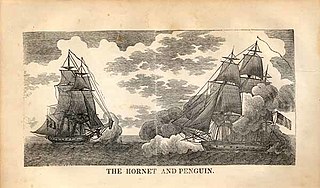 W
WHMS Penguin was a Royal Navy Cruizer-class brig-sloop launched in 1813. In 1815 USS Hornet captured Penguin in a battle that took place after the end of the War of 1812. Hornet then scuttled Penguin as she was too damaged to merit keeping.
 W
WHMS Piercer was a Royal Navy Archer-class gun-brig launched in 1804. She served against the French, Danes and Dutch in the Napoleonic Wars and was assigned to the Downs station. She participated in a number of operations in the Bay of Biscay, the English Channel, and the North Sea. In 1814 the British government transferred Piercer to the Kingdom of Hanover for use as a guard ship. Hanover decommissioned her in 1850.
 W
WHMS Podargus was a Crocus-class brig-sloop of the Royal Navy. She participated in one major battle during the Gunboat War between Britain and Denmark. After the war she served at Saint Helena for five or six years. On her return to Britain in 1820 she was laid up; she was finally sold in 1833.
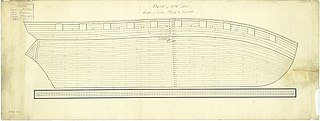 W
WHMS Primrose (1807) was a Royal Navy Cruizer-class brig-sloop built by Thomas Nickells, at Fowey and launched in 1807. She was commissioned in November 1807 under Commander James Mein, who sailed her to the coast of Spain on 3 February 1808.
 W
WHMS Procris was a Cruizer-class brig-sloop launched in 1807. She served at the second battle of Copenhagen. She then went out to the East Indies where she spent the rest of her active service, including participating in the 1811 invasion of Java. She returned to Britain in 1814 and was sold the next year. She then became a merchantman, while retaining her name. She traded primarily with North America but on a voyage in the Mediterranean an armed Greek brig captured her. However, her master was able to regain control. She was wrecked on 25 August 1839.
 W
WHMS Racoon was a brig-sloop built and launched in 1795. She served during the French Revolutionary Wars and in the beginning of the Napoleonic Wars. She had an active career under several captains, working essentially independently while capturing or destroying some 20 enemy privateers and naval vessels. Several of the captures involved engagements that resulted in casualties on Racoon as well as on her opponents. She was broken up early in 1806.
 W
WHMS Rosario was a Cherokee-class 10-gun brig of the Royal Navy, launched in 1808. She served during the Napoleonic Wars and participated in one engagement that earned her crew the Naval General Service Medal (NGSM). She was sold in 1832.
 W
WHMS Satellite was a 16-gun brig-sloop of the Seagull class built at the Hills shipyard, Sandwich, Kent, and launched in 1806. She foundered in December 1810 with the loss of all aboard.
 W
WHMS Savage was a 16-gun brig-sloop of the Seagull class of the British Royal Navy, launched in July 1805. She served during the Napoleonic Wars and captured a privateer. She grounded in 1814 but was salved. The Navy sold her in 1819.
 W
WHMS Skylark was a British Royal Navy 16-gun brig-sloop of the Seagull class launched in February 1806. She served primarily in the Channel, capturing several vessels including a privateer, and taking part in one notable engagement. She grounded in May 1812 and her crew burnt her to prevent the French from capturing her.
 W
WThe Speedy class brigs were a two-ship class of brig built for the Royal Navy during the later years of the American War of Independence. They survived into the French Revolutionary Wars.
 W
WHMS Swallow was an 18-gun Albatross-class brig–sloop of the British Royal Navy, launched in 1795 and sold in 1802. During her naval career she captured a number of French privateers while on the Jamaica station. After her sale she became an armed whaler sailing under a letter of marque. As a privateer she captured two French whaling vessels but then is no longer listed after 1810.
 W
WHMS Wolverine, was a Royal Navy 14-gun brig-sloop, formerly the civilian collier Rattler that the Admiralty purchased in 1798 and converted into a brig sloop, but armed experimentally. She served during the French Revolutionary Wars and participated in one action that won for her crew a clasp to the Naval General Service Medal. A French privateer captured and sank Wolverine on 21 March 1804 whilst she was on convoy duty.